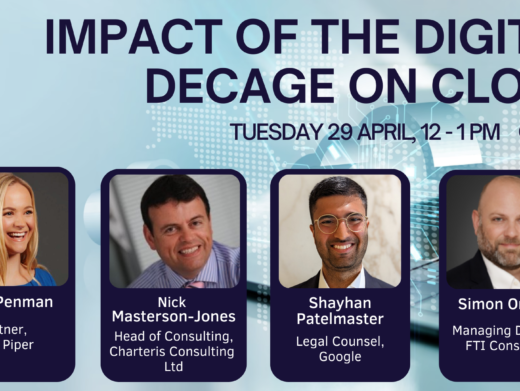In Penhallurick v MD5 Ltd [2021] EWCA Civ 1770, the Court of Appeal has upheld the decision of the Intellectual Property Enterprise Court regarding a dispute about authorship and ownership of software, a user guide and graphical user interface which was created during the course of employment
Mr Penhallurick (P), claimed ownership of copyright in eight works, all of them relating to a technique he called Virtual Forensic Computing (VFC). He alleged infringement of his copyrights by his former employer (MD5). MD5 argued that it owned the copyrights and counterclaimed for a declaration to that effect, also claiming that P had breached his contract of employment and had infringed MD5’s copyrights.
IPEC took the following aspects into account: the terms of the contract of employment; where the work was created; whether the work was created during normal office hours; who provided the materials for the work to be created; the level of direction provided to the author; whether the author can refuse to create the work/s; and whether the work was ‘integral’ to the business. The first instance judge ruled that the creation of VFC software was the central task for which P was being paid. Even though he did much of the work at home, it was done in the course of his employment and subject to employer ownership under section 11(2) of the Copyright, Designs and Patents Act 1988. In addition, the parties had entered into an agreement in November 2008 which contemplated ownership by MD5 of the works, including future works, developed by P in the course of his employment.
P appealed. The Court of Appeal’s judgment concentrated on whether the agreement entered into in November 2008 was an assignment of the copyright in the work.
The Court of Appeal said that the question of whether the November 2008 agreement was effective to assign the copyright to MD5 was one which only arose if the judge was incorrect in his conclusion that the copyright was already owned by the respondent. It did not follow, however, that the November 2008 agreement should be construed on the basis that the copyright was owned by the appellant. Rather, the November 2008 agreement should be construed on the basis of the objective factual matrix available to both parties at the time the agreement was reached.
There was nothing in the objective factual matrix to suggest that the November 2008 agreement was intended to operate as a licence, or as a licence only in respect of the core functionality of VFC. As the first instance judge had said, no reason was given as to why there was any commercial logic for MD5 to own only part of the copyright in the software.
The payment to P was described as a bonus, rather than a royalty or licence fee. Moreover, the bonus payments were to continue only so long as the appellant remained an employee and continued to be involved in VFC software or future versions. These considerations pointed away from the payment being a royalty or licence fee.
The intent of the document was to ensure that the copyright in the VFC software, including any copyright not already so vested, became vested in MD5.
The word “confirm” used in the document was to be understood in the sense of confirming an already established position, principally because the existing position as to ownership of copyright was not at that stage settled. The Court of Appeal pointed out that parties frequently effect “confirmatory assignments”, for example to put beyond doubt the legal ownership of copyright in advance of commencing proceedings for infringement of copyright.
The agreement also assigned the future copyright in the software developed by P. The ongoing “bonus” to be paid to P was effective consideration for the assignment of his rights.
Therefore, the Court of Appeal said that the first instance judge arrived at the correct conclusion in relation to the November 2008 agreement. MD5 owned the copyright in the work.
Suitability of IPEC
It also made some remarks about the appropriateness of the IPEC for complex cases. IPEC is intended to provide access to justice for small- and medium-sized enterprises and individuals in intellectual property disputes by keeping the costs of such litigation down and by limiting the costs exposure of litigants if they are unsuccessful. To keep costs down, IPEC has special procedures which involve tight restrictions on the materials that can be placed before the court. In addition, trials should not normally exceed two days. It said that it has to be recognised, however, that the procedures of IPEC are not well suited to resolving substantial factual disputes involving extensive disclosure of documents, cross-examination of factual witnesses and expert evidence. The parties should have realised that it was doubtful whether the case was still appropriate for IPEC. At the very least, they should have made a joint application to increase the trial estimate. That would probably have necessitated an adjournment, but an adjournment would have had the advantage of giving the parties and the court time in which properly to resolve the issues regarding the late disclosure by both parties of evidence relating to the source code of the VFC software.




